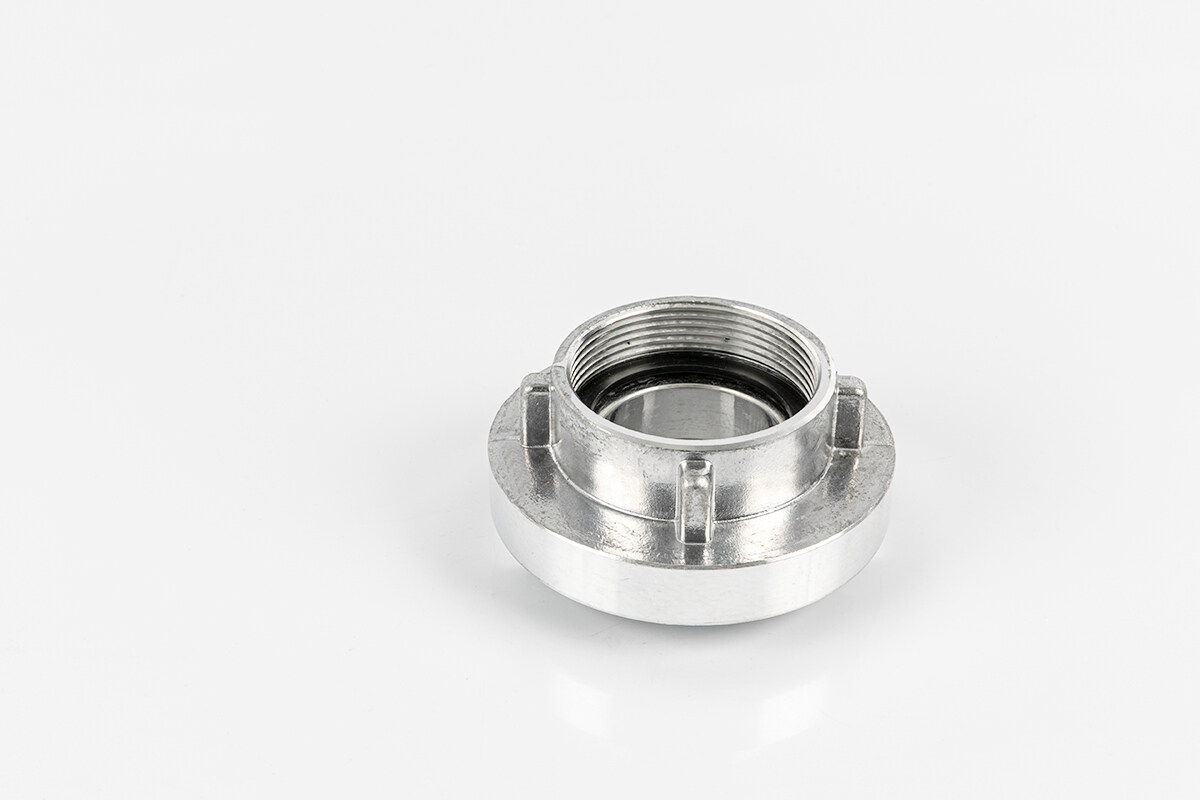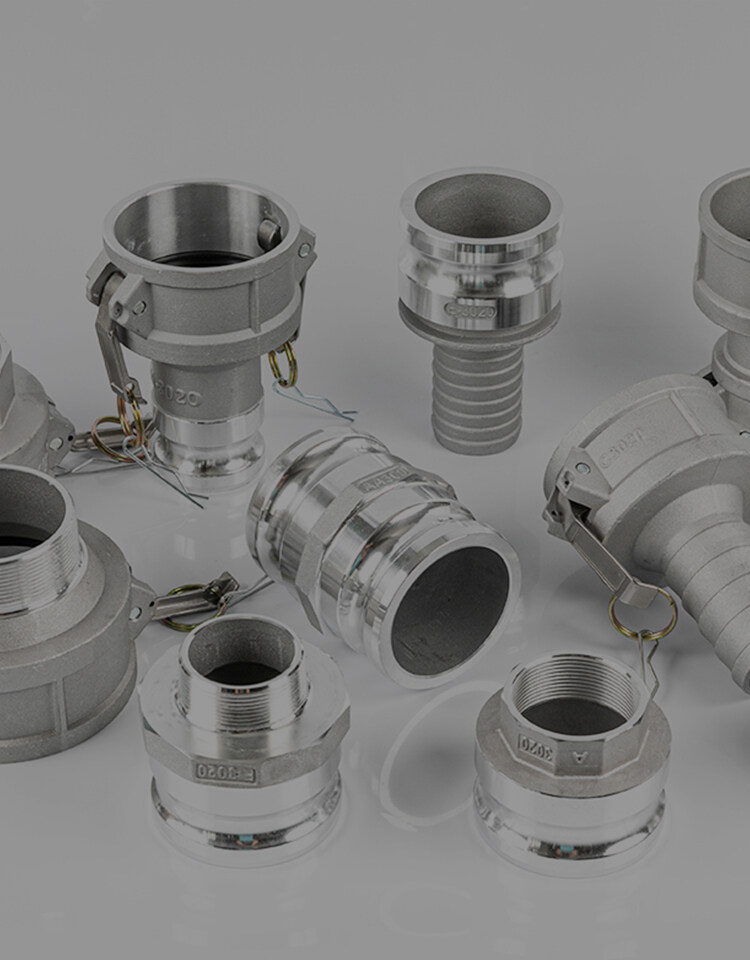Erreur de format d'e-mail
emailCannotEmpty
emailDoesExist
pwdLetterLimtTip
inconsistentPwd
pwdLetterLimtTip
inconsistentPwd

Nouvelles
Ici, vous pouvez décrire un morceau de texte que vous souhaitez exprimer

Mastering the Use of Female Camlock Fitting in Industrial Applications
In industrial fluid handling systems, the integrity of connections is paramount to ensure safety, prevent leaks, and maintain efficiency. The female camlock fitting is a cornerstone in the realm of quick connect and disconnect couplings, offering a reliable and user-friendly solution. This post will provide an in-depth look at female camlock fittings, their role in conjunction with camlock connectors, the relevance of grooved coupling, and their relationship with hose couplers, male camlock fittings, and camlock hose fittings.
Understanding Female Camlock Fittings:
Female camlock fittings, also known as female cam and groove couplings, are engineered for swift and effortless connections without the need for tools. These fittings are highly regarded for their operational simplicity, time-saving installation and removal, and the secure seal they achieve. The female part of the camlock system is designed with two levers that lock into the grooves of the male camlock fitting, creating a firm and leak-proof connection.
The Anatomy of a Female Camlock Fitting:
A typical female camlock fitting is composed of the following parts:
The “body” or “adapter,” which is the main structure that connects to the hose or pipe.
The “arms” or “cams,” which are levers that secure the fitting in place.
The “gasket,” which provides a tight seal between the female and male fittings.
The “lever,” which is used to open or close the cams.
Compatibility with Camlock Connectors:
Female camlock fittings are universally designed to be compatible with various camlock connectors, making them a flexible option for a multitude of applications. Their standardized design allows for seamless integration with existing systems, and the uniform sizing ensures that they can easily connect with male fittings from different manufacturers.
The Role of Grooved Coupling:
Grooved coupling is another prevalent method for joining pipes and hoses in industrial settings. Unlike camlock fittings, which offer a quick-connect feature, grooved couplings require a gasket and clamp system to secure the connection. Both methods are valuable in the industry, and the choice between them often depends on the specific needs of the application, such as the required pressure rating or the frequency of disconnection.
Hose Coupler Integration:
Hose couplers are crucial for connecting segments of hose or tubing in fluid transfer systems. They act as a type of hose coupler, providing a secure and leak-proof connection capable of handling high pressures and various chemical compositions.
The Interplay with Male Camlock Fittings:
The functionality is intrinsically linked to its male counterpart. The male camlock fitting is crafted to fit precisely into the female fitting, with the female’s cam arms locking over the male fitting’s groove. This interaction creates a robust and dependable connection that can be easily engaged and disengaged as necessary.
Camlock Hose Fittings in Action:
Camlock hose fittings, which encompass both female and male camlock fittings, are extensively used in sectors such as agriculture, chemical processing, petroleum, and water treatment. They are particularly beneficial in scenarios where hoses need to be frequently connected and disconnected, such as in tank truck services or when hoses are transferred between various locations or pieces of equipment.
Advantages of Female Camlock Fittings:
Female camlock fittings, also known as female cam and groove couplings, offer a range of advantages that make them a popular choice in various industries for quick and efficient fluid handling. Here are some of the key benefits:
Ease of Use: They are designed for easy operation, allowing for quick connection and disconnection without the need for tools. This can significantly reduce downtime when changing hoses or pipes, making them ideal for applications where frequent changes are necessary.
Time-Saving: The simplicity of the camlock design enables users to connect and disconnect hoses and pipes rapidly, which saves valuable time during operations. This is particularly beneficial in industries where speed is critical, such as in agriculture for irrigation or in firefighting.
Versatility: The camlock fittings can be used with a wide range of fluids, including water, oils, chemicals, and gases. They are also compatible with various types of hoses and pipes, making them suitable for many different applications.
Secure Connection: The locking mechanism of the camlock fittings provides a secure and leak-proof connection. The female fitting’s arms engage with the male fitting’s grooves to create a tight seal that can withstand pressure and prevent accidental disconnections.
Durability: Made from materials such as stainless steel, aluminum, brass, and polypropylene, the camlock fittings are durable and resistant to corrosion, wear, and harsh environmental conditions. This ensures a long service life even in demanding applications.
Cost-Effective: By reducing the time and labor required for connecting and disconnecting hoses, the camlock fittings can lead to cost savings. Additionally, their durability means they do not need to be replaced frequently, which further reduces costs over time.
Safety: The quick-connect and disconnect feature of camlock fittings minimizes the risk of spills or leaks, which can be critical when handling hazardous materials. This contributes to a safer working environment and reduces the potential for environmental contamination.
Standardization: Camlock fittings are standardized, which means that they can be easily sourced and replaced if necessary. The uniformity also allows for compatibility across different brands and manufacturers.
Minimal Fluid Loss: When disconnecting, the design of camlock fittings ensures minimal fluid loss, which is essential for maintaining the integrity of the fluid being transferred and for environmental protection.
Low Maintenance: They require minimal maintenance. They are easy to clean and inspect, and the gaskets can be quickly replaced when worn out, ensuring the fittings remain in good working condition.
Selecting the Right Female Camlock Fitting:
When choosing a female camlock fitting for your application, consider the following factors:
Material: Opt for a material that is compatible with the media being transferred and the environmental conditions. Common materials include aluminum, stainless steel, brass, and polypropylene.
Size: Ensure the fitting size matches the hoses or pipes in your system.
Pressure rating: Verify that the fitting can handle the operating pressures of your system.
Standards: Choose fittings that comply with industry standards for quality and safety.
Maintenance and Care:
Proper maintenance and care are essential for ensuring the longevity and optimal performance of any industrial component, and the camlock fittings are no exception. Regular maintenance not only extends the life of the fittings but also helps prevent potential leaks, spills, and other safety hazards. Here are some key maintenance and care practices for the camlock fittings:
Regular Inspection: Periodically inspect the the camlock fittings for signs of wear, damage, or corrosion. Pay special attention to the sealing surfaces, as any nicks or scratches can compromise the integrity of the seal.
Gasket Replacement: The gasket is a critical component that ensures a tight seal between the female and male camlock fittings. Check the gasket regularly for signs of deterioration, such as cracking or deformation, and replace it as needed.
Cleaning: After disconnection, clean the camlock fittings to remove any residue or debris that may have accumulated. This is particularly important when transferring different types of fluids to prevent cross-contamination.
Lubrication: Apply a suitable lubricant to the moving parts of the camlock fitting, such as the cam arms, to ensure smooth operation. Use a lubricant that is compatible with the material of the fitting and the type of fluid being transferred.
Proper Storage: When not in use, store the camlock fittings in a clean, dry environment to prevent dust buildup and protect them from the elements. If possible, cover the fittings to keep them clean.
Correct Usage: Ensure that the camlock fittings are used within their specified pressure and temperature ranges. Using the fittings beyond their rated capacity can lead to premature failure.
Tightening Procedures: When connecting the female camlock to a male fitting, make sure the connection is secure but do not overtighten, as this can damage the cams or the gasket.
Avoid Cross-Threading: When attaching the camlock fitting to a threaded pipe or hose, be careful to align the threads properly to avoid cross-threading, which can damage the threads and cause leaks.
Replacement Parts: Use only manufacturer-approved replacement parts to ensure compatibility and maintain the integrity of the fitting.
Training: Ensure that personnel who handle the camlock fittings are properly trained in their use and maintenance. This will help prevent improper handling, which can lead to damage and safety issues.
Chemical Compatibility: Always check the chemical compatibility of the camlock fittings with the fluids being transferred. Incompatible materials can degrade the fitting and lead to failure.
Avoid Unnecessary Stress: Do not subject the camlock fittings to unnecessary stress, such as pulling or dragging hoses by the fittings, as this can cause damage.
Conclusion:
Female camlock fittings are a vital component in the efficient and safe transfer of fluids in industrial applications. Their ease of use, reliability, and compatibility with other coupling systems make them a preferred choice for professionals seeking quick and secure connections. Whether used in conjunction with hose couplers, grooved coupling, or male camlock fittings, female camlock fittings provide a solution that can enhance the productivity and safety of any operation. By understanding the features, advantages, and maintenance requirements of these fittings, industry professionals can make informed decisions and uphold high standards in their fluid handling systems.

